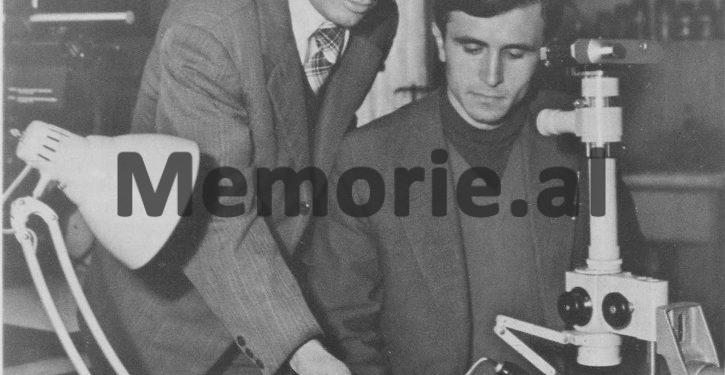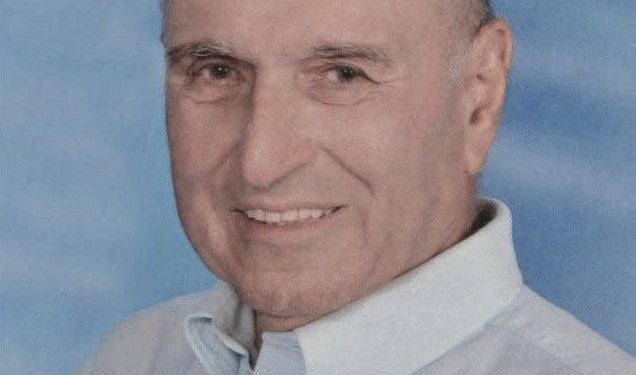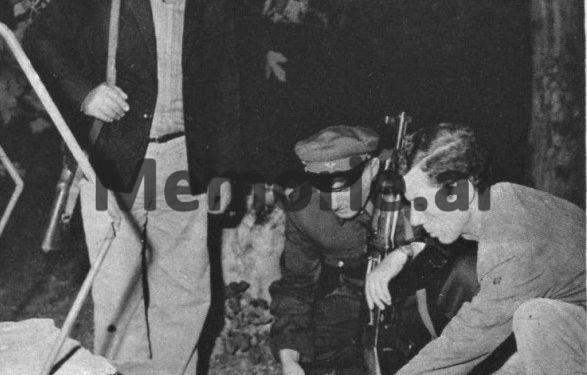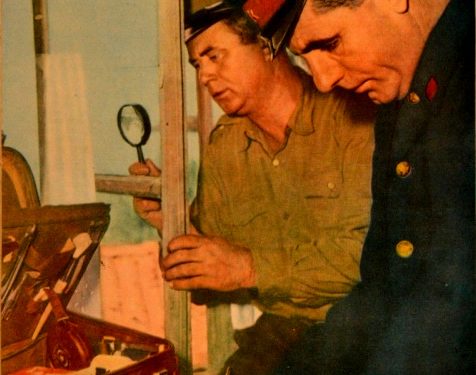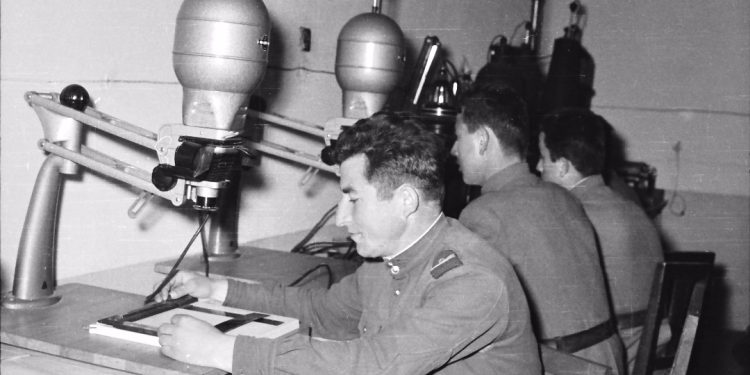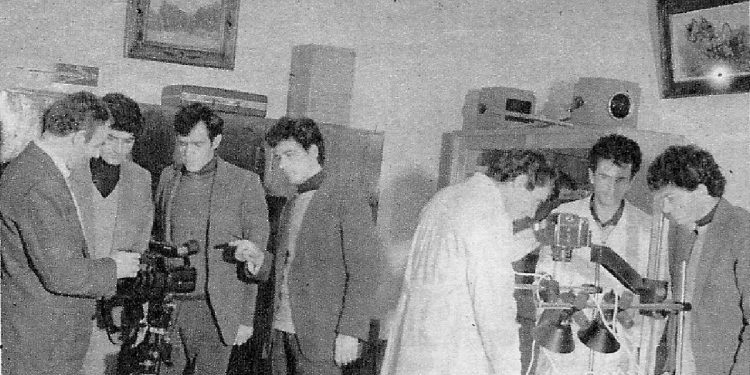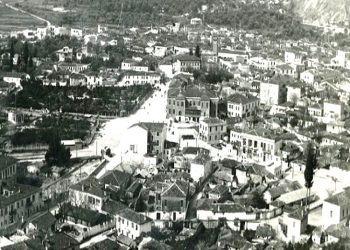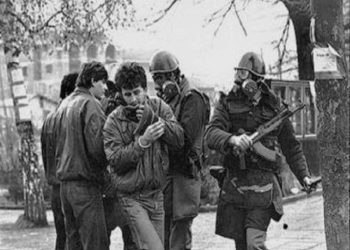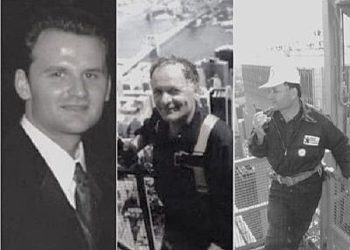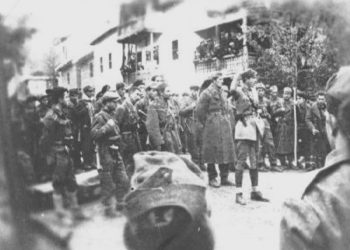By Prof. Dr. Bardhyl Çipi
Part eleven
Prof. Çipi: “I recount the cases when I was called to perform forensic examinations on people killed at the border, in an attempt to escape from Albania!”
SCIENTIFIC EVIDENCE OF IMPRESSIVE DEATHS
(Public figures, victims of dictatorship, and other events)
Memorie.al / Bardhyl Çipi, one of the most experienced specialists in our country in the field of Forensic Medicine and Bioethics, their teaching, and the training of new forensic experts. Some of his cases include: victims killed at the border while trying to escape the communist dictatorship, one whose hidden corpse was discovered with the help of his loyal dog, the interned woman who killed herself out of despair, citizens of Kosovo killed by Serbs for seeking to live free and avoid humiliation and torture, residents who lived in Albania 1,500 years ago, a robbed and murdered professor from the University of Tirana, etc. A book about death and scientific evidence for uncovering its various types: murder, suicide, those stimulated and coerced by the communist regime, murders and genocide against Albanians by their neighbors, fresh or decomposed and skeletal remains. Documents on the deaths of prominent figures: Kennedy, Lincoln, Napoleon, Lenin, Trotsky, etc., and other events involving the deaths of ordinary people. Knowledge about post-mortem changes and the examination of corpses worldwide and in our country, from a historical, ethical, forensic, and legal perspective. Some of his latest books are: “Forensic Medicine Manual” (2015), “Bioethics in Albania nowadays” (2016), “Albanian Transition under the Magnifying Glass of Forensic Medicine” (2018), “Forensic Medicine Criminology” (2020).
Continued from the previous issue
Antology of Forensic Examinations of Corpses from Various Events in Our Country
Forensic medicine performs the largest number of examinations on living persons to solve their various and numerous issues. Meanwhile, the examinations of corpses are much fewer compared to those of living individuals. But their importance is much more significant because they deal with death, which is the greatest evil that happens to the human being, as well as with issues of criminal deaths, often quite complicated, especially when the perpetrator of the murder must be discovered.
I have participated in a very large number of these examinations, starting in the first years after my graduation from medicine, unrelated to the persecutions and criminal deaths of the victims of the former regime. I then continued them very intensively after my appointment as a forensic physician in the department and the Forensic Medicine Service, which was later called the Institute of Forensic Medicine. I have performed a large part of them in collaboration with other forensic colleagues and criminalists.
At the same time, after 1990, with the overthrow of the communist regime, I was given the opportunity, during my specializations in France (at the Paris Forensic Institute, the Forensic Medicine Service of R. Poincare Hospital in Garches, Paris, the Department of Forensic Medicine of the University of Lyon); in Switzerland (at the Forensic Medicine Service of Geneva); and in Kosovo (at the Department of Forensic Medicine of the Faculty of Medicine of the University of Pristina), to have assisted and participated in the forensic examinations of numerous deaths of various types.
In addition, during numerous scientific activities in various countries in Europe and Africa, I have visited the services, institutes, and university forensic departments of Croatia (in Zagreb and Dubrovnik), Poland (in Warsaw and Krakow), Greece (in Heraklion of Crete and Athens), Ukraine (in Kyiv), Macedonia (in Skopje and Tetovo), Turkey (in Istanbul), Germany (in Dusseldorf), Egypt (in Cairo), etc. All this, along with participation and presentations at numerous congresses, conferences, and trainings in the fields of forensic science and forensic medicine, as well as in several national and international projects in these fields, have helped me achieve the most complete formation in these disciplines.
After 2015, when I retired, I am still intensively continuing to participate in the review of these cases, not through performing autopsies, but by studying the problems that have arisen from them, or have remained unexplained, as well as through the forensic analysis of special events with historical value, and many other issues.
The results of the countless examinations of cases of deaths from murders, suicides, accidents, sudden deaths, unknown human remains, etc., I have presented in a large part of them in several previous publications, such as; “Manual of Forensic Medicine“, “Albanian Transition in the Loupe of Forensic Medicine“, etc.
The Murder and Robbery of the Professor
A case from the forensic medicine practice of our country in the late 1980s concerns the robbery followed by the murder of an elderly citizen over 70 years old, a professor at the University of Tirana, who was found dead around 11:00 PM, in his apartment in the city of Tirana.
In the complete inspection of the corpse at the crime scene and later in the morg, which was in a state of decomposition (color and bloating stages), the presence of the bottom part of one leg of an old and torn canvas pant was found in the victim’s mouth and pharynx, as well as external and internal signs of asphyxia; there were no other injuries, and the toxicological examination was negative.
This data confirmed that the death was caused by murder, due to mechanical asphyxia, by blocking the airways with a foreign body of soft material, and that this crime had occurred several days earlier.
In the follow-up of this case, the psychological data derived from the crime scene inspection were of particular importance, as they helped clarify the circumstances and discover the perpetrator of this criminal murder.
-Initially, this event became known from the fact that the outer door of the victim’s apartment caught fire. After opening it, it was found that some clothes had burned in the corridor near the apartment’s outer door. This indicated that, most likely, this fire was deliberately set by the perpetrator of the crime, to report it, several days after the murder.
-In one of the apartment rooms, the corpse was found lying on top of three newspapers spread on the cement tile floor. The other rooms of this apartment were found in a mess, with all closets and drawers open, with belongings taken out and scattered irregularly. These actions were performed to take valuable items the victim might have had, as well as money.
-The professor must have been quite wealthy from the income he received from selling the many books he published. But these large sums of money, which he did not keep at home, were found in several savings booklets that were discovered during the crime scene inspection.
-On the other hand, the entire apartment was very dirty, uncleaned for a long time, with various insects and large spider webs, especially in the corners between the walls and the ceiling. Such an appearance of the apartment indicated that the victim, who lived alone there, did not care about it at all, which is explained by the fact that he was elderly and perhaps suffered from senile sclerosis.
-The finding of all belongings thrown on the ground indicated that the perpetrator had searched there to find the victim’s valuable items, after having strangled him earlier. On the other hand, finding the victim lying on the spread newspapers suggested that the killer had shown some kind of care for the victim.
-Likewise, the setting of the fire at the apartment door must have been done, apparently, to notify of this event, an expression of the perpetrator’s regret that the corpse should not be left to decompose further.
Thus, all these observations of a psychological nature indicated that the perpetrator of this murder must have been an acquaintance and perhaps a relative of the victim, data which helped in the search and discovery of the culprit.
The Sudden Death of a Citizen in a Village near Tirana
In the 1980s, on a hill quite far from a village near Tirana, a well-known citizen, aged 44, a resident of this village, was found dead. The victim was found in a ditch-like spot, lying face down on the ground, with his face smeared with blood, and next to it was a shotgun and two shotgun cartridge cases.
At first sight of the crime scene, the impression of a death by firearm was created: the shotgun with its cartridge cases near the body, indicating that two shots had been fired with it, the blood on the victim’s face, raising the version of an eventual mechanical injury.
But from a careful inspection of the corpse at the scene and in the morg, no mechanical or firearm injury of any kind was found. Likewise, the toxicological examination was negative.
However, advanced sclerosis with marked narrowing of the coronary arteries of the heart was noted, as well as signs of an asphyctic death. All this, together with the results of the histological examination, pointed to a rapid, asphyctic-type death, as a result of a heart rhythm disorder.
On the other hand, the blood on the victim’s face was seen to come from the nose, which, as is known, usually occurs in asphyctic deaths, as was this case. Also, from the statements of family members, the victim had left home the day before and had gone out hunting with his shotgun.
The presence of the shotgun cartridge cases, along with the hunting weapon near the victim, most likely, can be explained by the hypothesis that at the moment the fatal heart crisis began, the victim may have managed to fire the shotgun twice, with the intention of signaling for help to be found as soon as possible to receive medical aid. This is thus a typical case of a sudden death that occurred in unknown circumstances.
Suicide with an Atypical Weapon, Made by the Victim Himself
This event occurred in the 1980s. The victim, a person about 60 years old, a lathe operator by profession, but who was a user of alcoholic beverages, married but with major quarrels with his wife, also suffered from psychological disorders.
In a moment of despair, also due to retirement, he shot himself with the intention of suicide, with a firearm he had made himself, and died after a few hours. The event occurred in the courtyard of Hospital No. 1 in Tirana. The victim, still alive, was immediately sent to the emergency room of Hospital No. 2 in Tirana, where he died after several hours.
I went immediately to perform the first external inspection of the corpse, placed on a portable bed, in one of the emergency rooms of this hospital. After this, the corpse was sent to the morg, where I directed the performance of the autopsy.
On the corpse, the entry hole of the bullet was found in the right temple and the exit hole in the left parietal region of the head. Thus, the direction of the shot was from right-to-left, from front-to-back, and slightly from bottom-to-up.
Regarding the distance, the absence of supplementary factors around the entry hole in the right temple, the slight eversion of its edges, their irregularity, as well as the lack of muzzle stamping, indicated that the shooting was done with non-hermetic contact, meaning the muzzle of the weapon had lightly touched the skin of the right temple.
On the other hand, the great irregularity of the entry hole edges testified to the action of a bullet with a much smaller kinetic energy than that of ordinary weapons, which can be achieved by atypical weapons, as was the homemade weapon found at the crime scene, whose barrel was very short.
Finally, the presence of blood and soot spots on the right hand of the corpse characterized a suicide. In the specific case, the victim, who was in the second phase of alcoholic intoxication (verified by the presence of alcohol in the blood at ), lightly placed the muzzle of the atypical weapon, held with his right hand, on the right temple and carried out the fatal shot.
The weapon used by him, examined by criminalistic specialists, was a weapon produced by the victim in an artisanal manner, consisting of the barrel and the firing mechanism. The barrel, long, caliber, with a threaded part, has the cartridge chamber and an annular ring at the end. The firing mechanism includes the firing pin, spring wire, a screw, the trigger puller, and its pin. The shot is executed by releasing the trigger, which holds the cocked firing pin. After this, the firing pin strikes the primer, which is followed by the bullet exiting the barrel, capable of causing damage at close distances. Memorie.al




